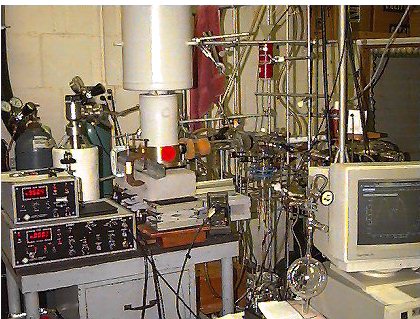
The flow cell system probes the dynamics of a catalytic oxidation reaction over a polycrystalline platinum gauze. In addition to using mass spectroscopy to determine the ratios of reaction products, the flow system also uses diode laser absorption spectroscopy. to measure the internal energy distribution of the nascent carbon dioxide product of the reaction. This distribution will favor vibrational modes indicative of the transition state since any carbon dioxide formed on the platinum surface is weakly bound and desorbs before equilibrating with the surface. Previous studies on the combustion of CO(g)+O2(g), CO(g)+NO(g), and C2H2(g)+O2(g) have found that the carbon dioxide produced in each reaction has similar energy distributions over CO2(g)’s four vibrational modes suggesting that the CO2(g) formed in these reactions follows the same pathway. For these reactions, all the vibrational modes were excited relative to what is expected from CO2(g) in energetic equilibrium with the platinum surface. Moreover, the energy distribution favors the asymmetric mode over the similarly distributed bending and symmetric modes. The laser is a tunable diode laser and has a frequency range of 2250-2350 cm-1, appropriate for probing the asymmetric stretch of the CO2 molecule. In a typical spectrum at room temperature there are about 15 lines in one mode. This trend does not continue for the CH3OH(g)+O2(g) reaction. In this case the internal state distribution data suggests the presence of a formaldehyde intermediate in the oxidation of methanol. Currently, we are using this apparatus to investigate the catalytic oxidation of CO occuring on Pt nanoparticles deposited on bundles of carbon nanotubes.